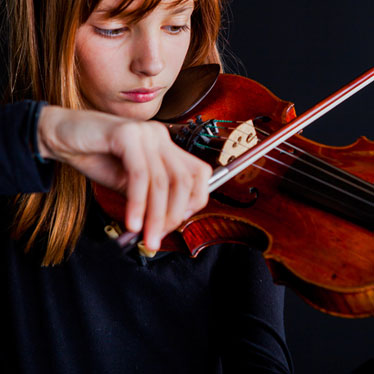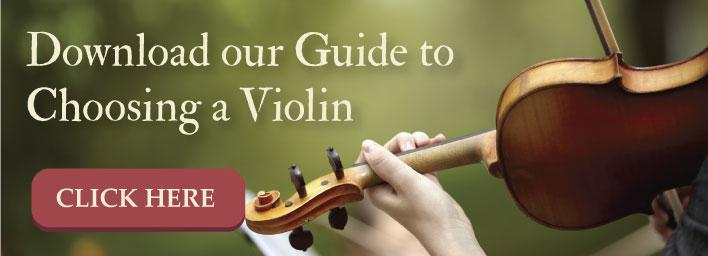Physical Movement for Violinists: How to Incorporate Dance and Movement into Your Violin Performance

Student violinists often aspire to include movement and dance in their performance. Artists like Lindsey Stirling and Máiréad Nesbitt are able to enthrall audiences by incorporating dance moves while playing the violin, and many students wish that there was some type of course or instruction that could teach that ability. Unfortunately for violinists who want to acquire that skill, there’s really no clear-cut method or teaching technique.
Learning to incorporate dance while playing the violin is more of a personal expression than anything else. Although there isn’t a qualified "standard" way to gain this ability, learning to include dance moves isn’t beyond your reach. In a YouTube interview with Lindsey Stirling, she explained that her inspiration and training were all self-taught. That’s good news for violinists who want to try to master this awesome skill. Obviously, you won’t be jumping around the stage barefoot a week after you begin, but by gradually building your ability to move while you play over time, you’ll be able to create your own personal style of violin-dance. The following tips can help get you started.
Loosen Up
Playing the violin isn’t a stationary skill. When you first start learning, you’ll naturally be a little rigid because you are constantly trying to make sure that your form is correct. However, to play the violin accurately, you must not have tension in your arms, wrists, back, hands, or shoulders. In fact, learning to loosen up while playing is one of the fastest ways to make progress. To be able to include dance moves while playing, you’ll definitely need to be relaxed.
Learn to Dip and Sway
The first thing that you’ll need to incorporate in your violin performance is that ability to feel the music and sway to it. Watch great violinists like Joshua Bell or Sarah Chang and observe how their torso moves with the music. See how their backs bend fluidly and the motions they use complement their playing? By moving your body in rhythm with the piece and really feeling the music throughout your body, you’ll start to recognize when to move.
It can help if you’re able to close your eyes and just listen to the sounds you create. Start with a tune that you know very well and try to add small motions at certain points during the piece. After you become comfortable with those, include a few more until you feel natural swaying in your body to the music.
Add Small Steps
Dancing also involves moving your feet, but you don’t want to try too much at once. At first, try walking while you play. Don’t worry about dipping and swaying, just focus on taking small steps as you play. It can help if you have plenty of room for practicing this aspect, and if you know any basic dance steps, this is a good time to use them. Again, don’t focus on your upper body, just concentrate on performing the steps while you play. If you aren’t familiar with some basic dance steps (and incidentally, your arms are almost always close to the right position when you do these), check out these short videos that can offer basic instruction:
- How to Waltz for Beginners
- Basic Dance Steps (Wall Street Journal)
- How to Do the Box Step (Fred Astaire Dance Studio Belmont)
These videos provide a basic guide for learning a few dance moves, but there are tons of others out there. So, if you’ve never danced before, a simple google search can get you started. Remember, at this point, you just want to concentrate on adding small movements with your feet while you play.
Combination and Inspiration
Now that you feel comfortable moving around while you play your violin, you can gradually combine the two. Start off very simply by swaying a little and moving your feet as you sway. Incorporating dance moves with violin performance is a personal expression. Let your body move the way it wants to as you make music.
It’s also a good idea to watch other dancers in a variety of styles. Ballroom dancing, hip hop, ballet, and other techniques offer a wide scope for your ideas. See if there is a certain move that you want to try and break it down into very small steps. That way you can incorporate it without feeling overwhelmed or accidentally dropping or smashing your expensive instrument. Also, watch some videos of successful performers who are able to dance while playing the violin:
- Granuaile's Dance, Máiréad Nesbitt (Celtic Woman)
- The Arena, Lindsey Stirling
- Violin and Tap Combined
Once you’re able to add dance movements into your performance style, you can work on choreographing certain pieces. The thing to remember is to make your moves your own and express yourself through the music and the movements you create.


